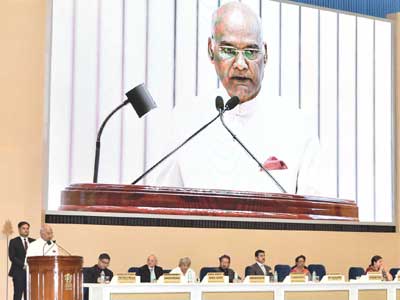Speaking on the occasion, the President said that our films both represent and contribute to the diversity that is India’s biggest strength. In their narrative, our films inspire us to stay true to the ideals of our civilization and of our shared society. They educate and they entertain. They also hold a mirror to the social challenges that we still have to overcome. And they do this in a language that is universal.
President said that films are made in a variety of languages in India, from Bhojpuri to Tamil, Marathi to Malayalam to several others. And, yet cinema is a language in itself. Hindi cinema has probably done more than any other institution to popularise Hindi as a language across the country. One doesn’t have to be a Bengali to appreciate the humanism and the nuance of a Satyajit Ray or a Ritwik Ghatak. We need not know Telugu to be mesmerized by the epic of “Bahubali”. And let us not forget that AR Rahman – who has won the National Award again – made an early impression even among those who did not understand the Tamil words of the songs, but were nevertheless enchanted by his music.
Watch Photos: President Presents Prestigious 65th National Film Awards
The President said that cinema is culture and cinema is also commerce. The Indian film industry is among the largest in the world, with about 1,500 films a year. It is an expression of Indian soft power and has a trans-continental footprint. Our films are watched and appreciated in Japan and Egypt, China and the United States, Russia and Australia and so many far-off countries. Films are one of our foremost cultural exports and an important device for connecting the global Indian community to the rhythms of life back home.
{youtube}gJ1UiH-Bxbg{/youtube}
"We are living in exciting and transformational times for cinema and for the wider entertainment economy. Technology has changed the way films are made as well as the way they are consumed. With the advent of low-cost data and smartphones and tablets, there is a clear shift in viewership patterns. The Indian film industry is adapting to these changes and he was sure it would continue to devise strategies to convert challenges into opportunities. Filmmakers could also find that the economics and the delivery of niche productions will become increasingly feasible", added Kovind.

















Related Items
Balanced population growth accelerated national development
Divisive Politics, A Hazard to National Interests…
FTII student bags ‘La Cinef’ Award at 77th Cannes Film Festival